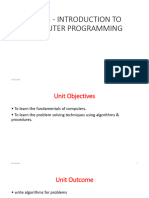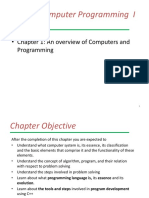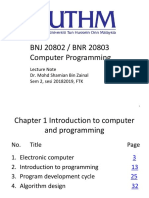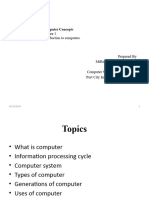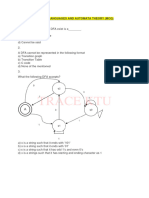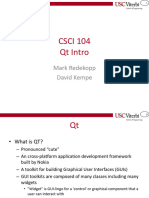0% found this document useful (0 votes)
294 views79 pagesUnit I LectureNotes
The document outlines the curriculum for a Programming for Problem Solving (PPS) course, covering key topics such as computer system components, algorithms, program development cycles, and high-quality programming practices. It includes course objectives, outcomes, and prerequisites, as well as detailed content for each unit, ranging from basic programming concepts to system design and integration. Textbooks and references for further reading are also provided.
Uploaded by
Vrinda PatilCopyright
© © All Rights Reserved
We take content rights seriously. If you suspect this is your content, claim it here.
Available Formats
Download as PDF, TXT or read online on Scribd
0% found this document useful (0 votes)
294 views79 pagesUnit I LectureNotes
The document outlines the curriculum for a Programming for Problem Solving (PPS) course, covering key topics such as computer system components, algorithms, program development cycles, and high-quality programming practices. It includes course objectives, outcomes, and prerequisites, as well as detailed content for each unit, ranging from basic programming concepts to system design and integration. Textbooks and references for further reading are also provided.
Uploaded by
Vrinda PatilCopyright
© © All Rights Reserved
We take content rights seriously. If you suspect this is your content, claim it here.
Available Formats
Download as PDF, TXT or read online on Scribd
/ 79






